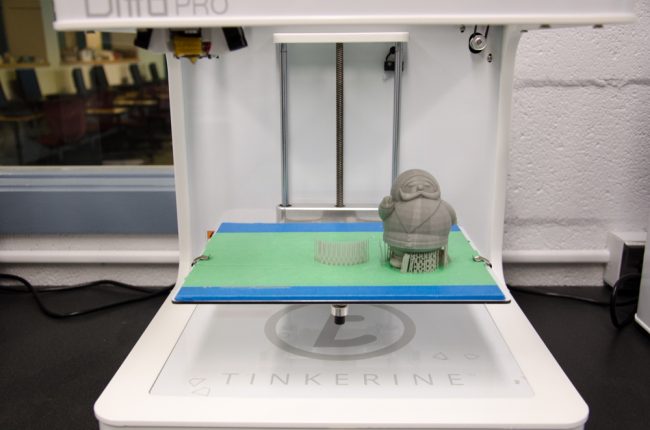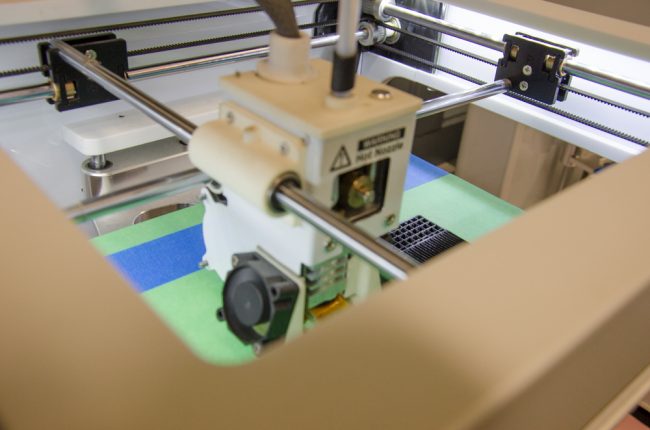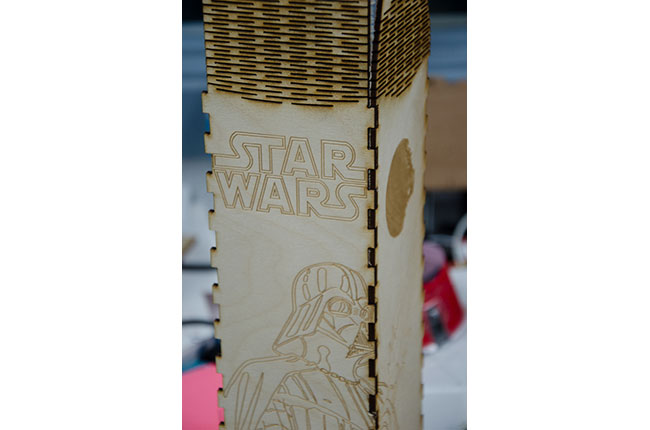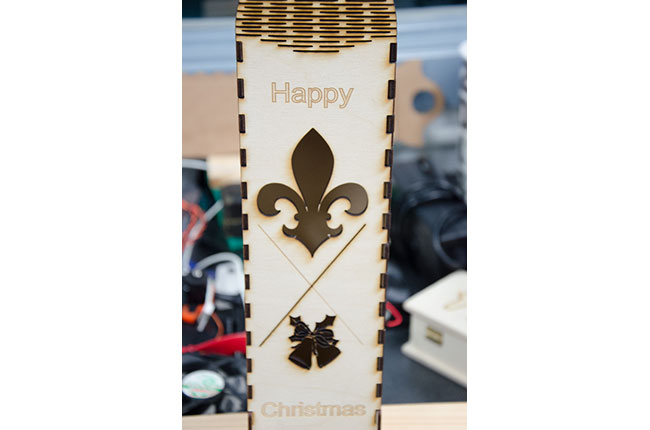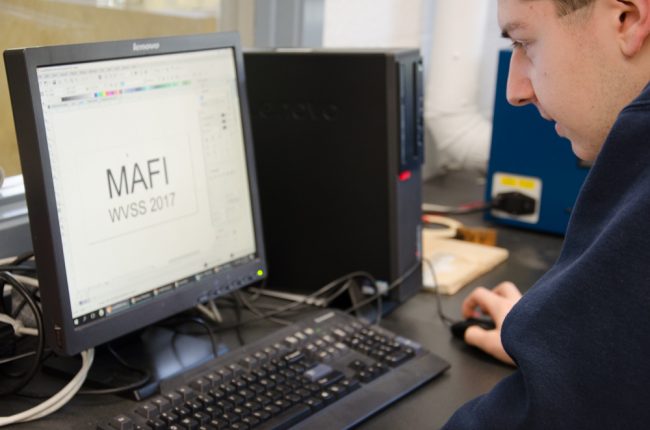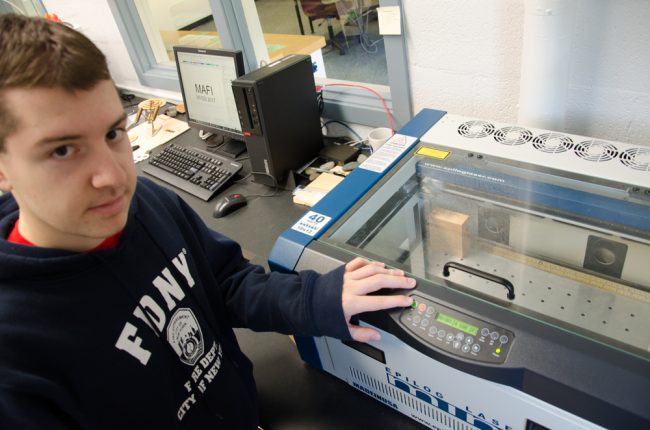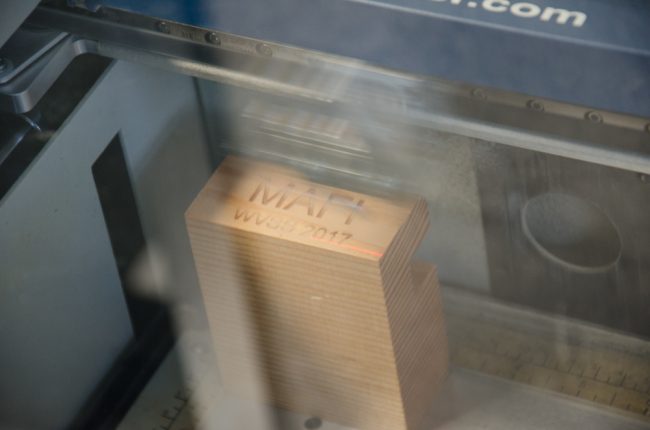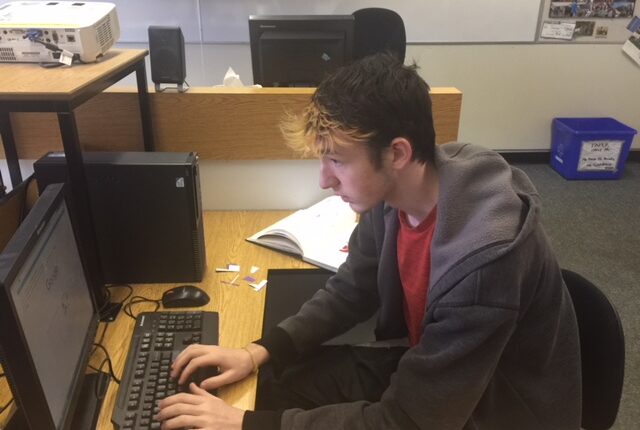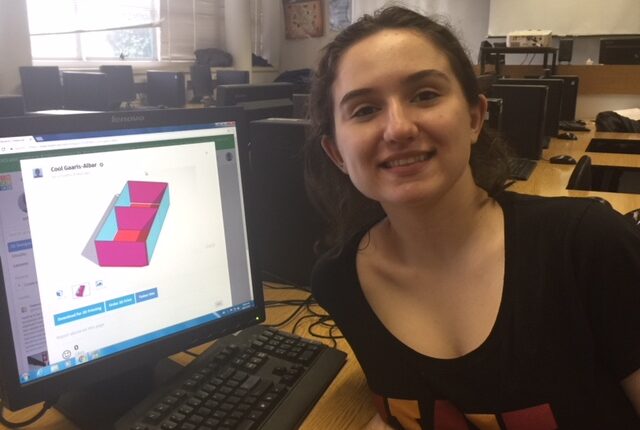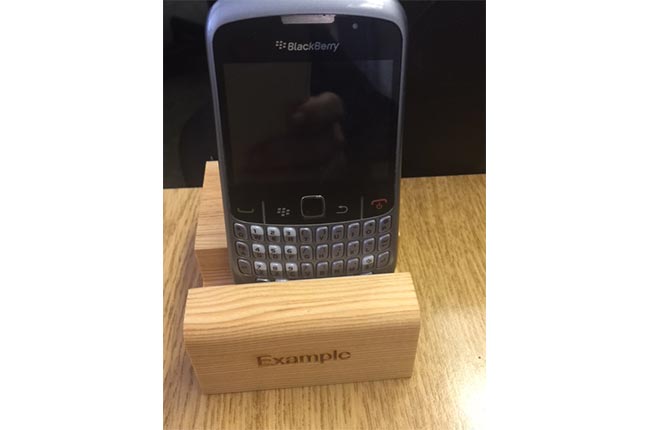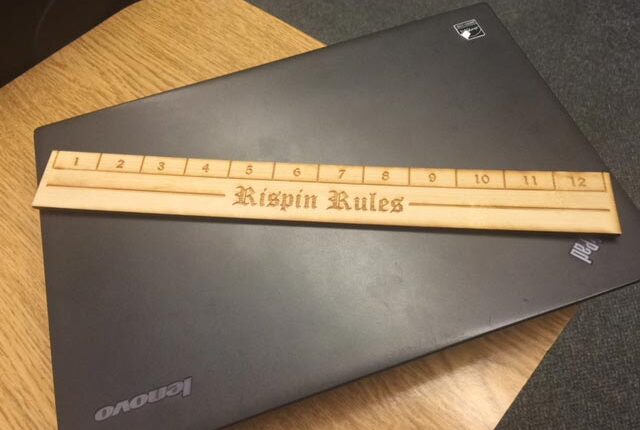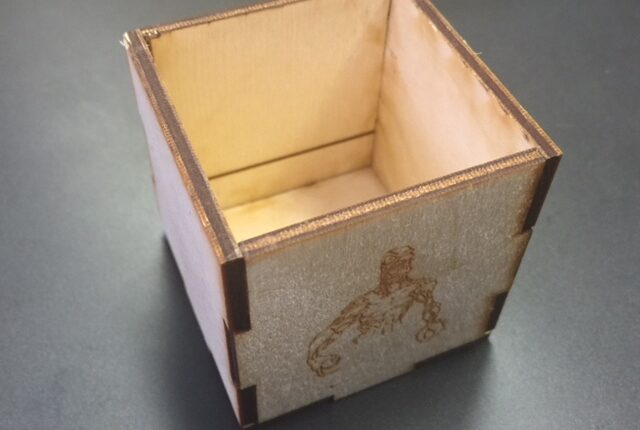Maker math boosts morale
December 19, 2017 - 5 minutes readUnlike a regular math program, this course incorporates maker technology, such as a 3D printer, laser cutter and a weather tracking station, to connect math to real world problems and solutions. Many of the students enrolled in this class had previously struggled in the regular math stream, but are now fully engaged and achieving well with a new lens on learning. Grade 10 student Sophia Day recently designed and printed a pill box to help remind her grandfather to take his medication. She’s planning to give it to him for Christmas, and is very excited to be able to apply what she’s learning using technology to complete personal, term and year-long math projects. In another printing project, she’s creating a model of the printer, and learning how to scale things in the process. “I only wish I’d taken this course sooner,” says Sophia, who is also learning about the stock market in a class stock trading competition using a free platform to make virtual trades. “My grandmother, who was a nurse, was able to move to the area after successfully managing her own portfolio, so it’s something I really wanted to learn more about.” Nick Owen, who earns close to 100% in most of his A&W math projects, says he had scores closer to 49% in Grades 8 and 9. It’s the hands-on work that he gets to do in the program that inspires him to get creative and dig deeper. “We’re using the data to look at current and historical weather trends,” he says. “We are going to have a look at how that’s changed over time as we monitor the readings throughout the year.” While a number of the students in the class have used the laser cutter to create their own personal wooden rulers and small boxes, Anthony Lambing is the first student who has used the device to create a usable cell phone holder. The program has really helped him focus on what he’d like to do after finishing school, and he’s headed to pilot school in Squamish to begin flight school in January. “This course covers every day math – basically everyday math that we all need to use,” says Teaching Assistant Patrick Best. “Students learn to figure out things like budgeting and investments or how much paint you’d need to cover a room, based on square footage of the space – practical, part of life skills.”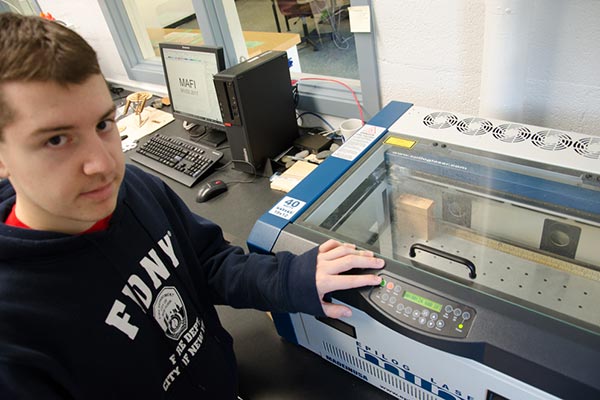 Students at West Vancouver Secondary School enrolled in Keith Rispin’s Grade 10 Applied and Workplace Mathematics course are taking math in new directions. Designed to provide students with the mathematical foundation and critical thinking skills for entry into the majority of trades and for direct entry into the work, the course covers topics like algebra, geometry, measurement, ratios, statistics and probability.
Students at West Vancouver Secondary School enrolled in Keith Rispin’s Grade 10 Applied and Workplace Mathematics course are taking math in new directions. Designed to provide students with the mathematical foundation and critical thinking skills for entry into the majority of trades and for direct entry into the work, the course covers topics like algebra, geometry, measurement, ratios, statistics and probability.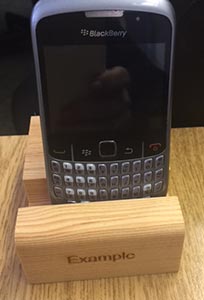 Using Tinker CAD, Owen is currently designing and printing a transformer puzzle. He will print the various pieces of the puzzle to build the transformer, and can earn additional marks if the project is successful. Owen is also currently in first position among his classmates in the stock market competition, and he keeps a close eye on his trades. He also demonstrated the system that the class has set up to monitor weather, using data collected by a weather station mounted on the rooftop of the school.
Using Tinker CAD, Owen is currently designing and printing a transformer puzzle. He will print the various pieces of the puzzle to build the transformer, and can earn additional marks if the project is successful. Owen is also currently in first position among his classmates in the stock market competition, and he keeps a close eye on his trades. He also demonstrated the system that the class has set up to monitor weather, using data collected by a weather station mounted on the rooftop of the school.
